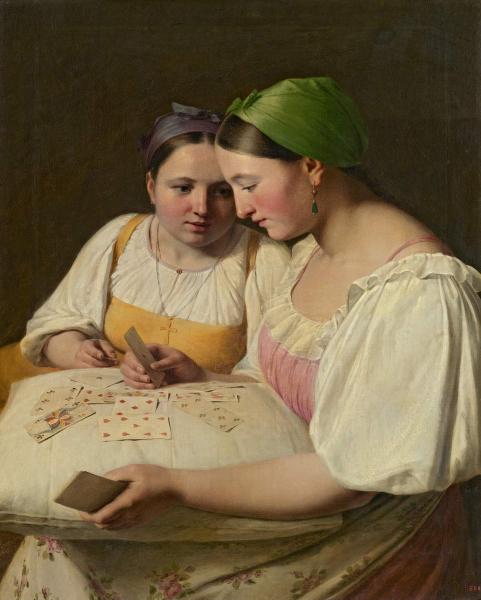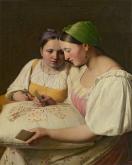Fortune-Telling by Cards
1842
- oil on canvas. 75.5 x 62
- Ж-5177
Пост.: 1898 от С. Н. Галяшкина (Москва); ранее – в собр. В. А. Кокорева (?) (Москва)
- Period Early 19th century
- CategoryGenre Painting, Portrait
- Share
Fortune telling is an ancient tradition in Russia. It has long been the custom to tell fortunes on the eve of all important Orthodox holidays, throughout the entire year. The most propitious time for fortune telling, however, was believed to be yuletide and the summer solstice. Yuletide (svyatki) officially began on Christmas Eve and lasted until Epiphany (Twelfth Night). Those days lay at the junction of the old and the new years and were therefore times when people were particularly interested in learning of future events in their lives, such as the prospect of marriage, good health, prosperous business ventures and agricultural plenitude. It was popularly held that the forces of evil, whose presence was a crucial factor in ensuring the reliability of fortune telling, were especially powerful at the New Year. Play and Passion in Russian Fine Art. St-Petersburg. 1999. P. 120.
There were various different ways of telling fortunes in Russia. Fortunes were told by looking into fire; shadows on the walls were interpreted, as were the charred splinters of firewood left over from a fire. Water was another element that could be used to predict the future. Melted wax or tin was poured into water and the meaning of the figures that it formed analyzed. Fortunes could also be told by observing the behaviour of animals and poultry. Fortune telling with cards then became popular in the nineteenth century. Play and Passion in Russian Fine Art. St-Petersburg. 1999. P. 123.
This picture shows a young girl telling her friend's for tune. The cards predict al "future journey, a meeting with the king of diamonds and emotional worries. At the same time the girl is threatened by something unpleasant from the "queen of spades, possibly a rival in love. The ace of diamonds in the hands promises a letter or new. Play and Passion in Russian Fine Art. St-Petersburg. 1999. P. 123.

